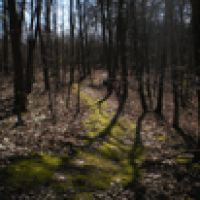Zhang et al., 2009
Combining time-lapsed GPR and real-time soil moisture monitoring to detect subsurface lateral flow.
Zhang, J., Lin, H., Doolittle, J. (2009)
SSSA Annual Meeting
Abstract
Subsurface lateral flow in the catchment has been observed to contribute substantially to runoff. But understanding the mechanism and flow path of subsurface lateral flow is difficult because of the subsurface complexity and the lack of appropriate means to identify this complexity. We combined the use of time-lapsed GPR and real-time soil water monitoring to identify subsurface flow during infiltration experiment at the hillslope of the Shale Hills Catchment. Two flow processes were identified during the infiltration and re-distribution. First was the vertical flow immediately after introducing water, with increased radar reflectance in the left limb of hyperbola shape signal. Second was the lateral flow 15 to 30 minutes after introducing water, with increased radar reflectance in the right limb of hyperbola shape and decreased radar reflectance in the left limb signal. A finite-difference time-domain (FDTD) electromagnetic model was used to simulate the changes in radargram induced by water content change. The simulated pattern was similar with the experimental radargram. The soil water monitoring revealed that preferential flow occurred at the O-A horizon interface. Based on the results of the obtained radargrams and sensor responses, we propose a model to describe the two flow regimes along the hillslope, with an exchange term between matrix storage and macropore storage. The simulated results indicate that the model can match the measured pattern.
Citation
Zhang, J., Lin, H., Doolittle, J. (2009): Combining time-lapsed GPR and real-time soil moisture monitoring to detect subsurface lateral flow. SSSA Annual Meeting.
 This Paper/Book acknowledges NSF CZO grant support.
This Paper/Book acknowledges NSF CZO grant support.
Explore Further


